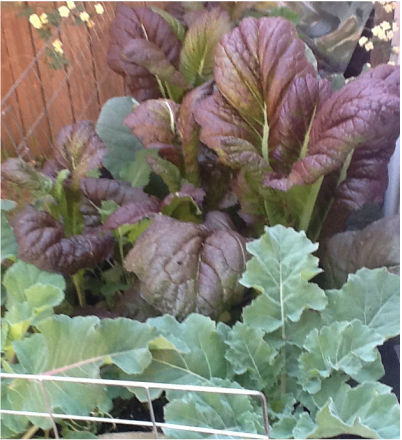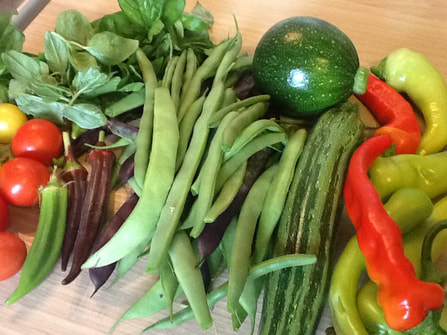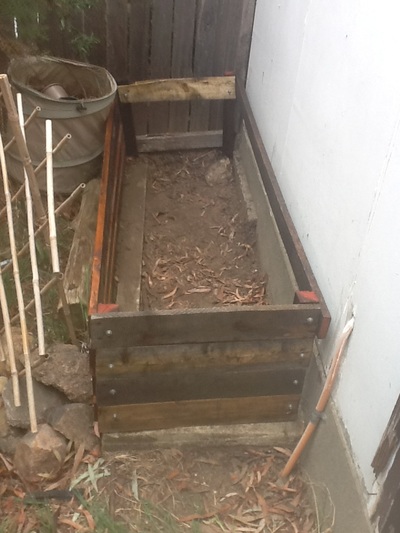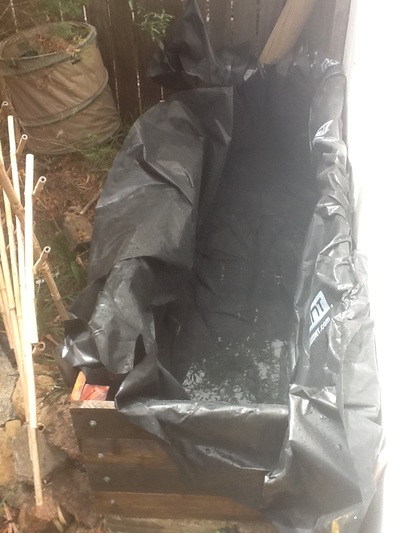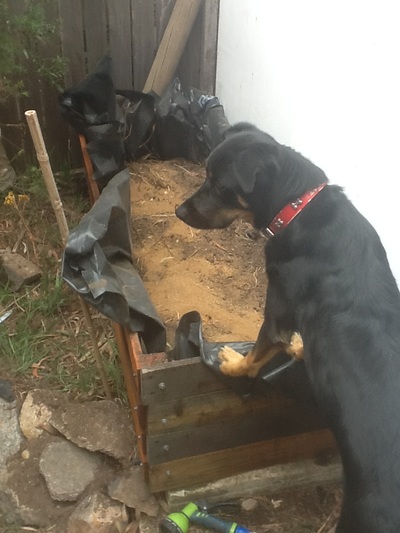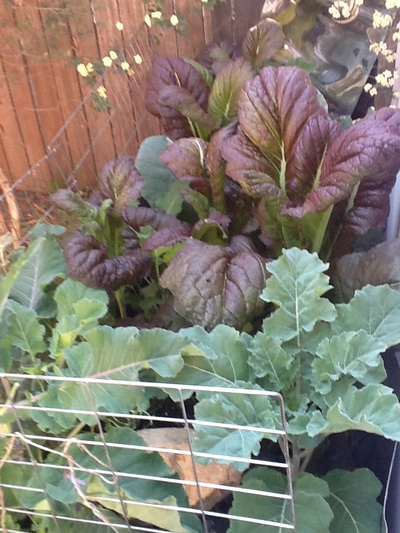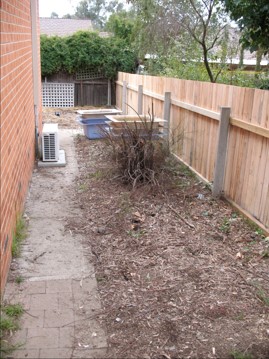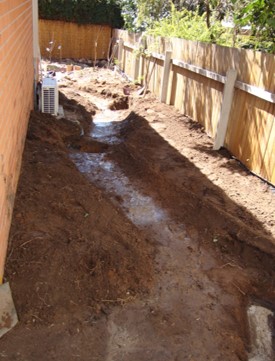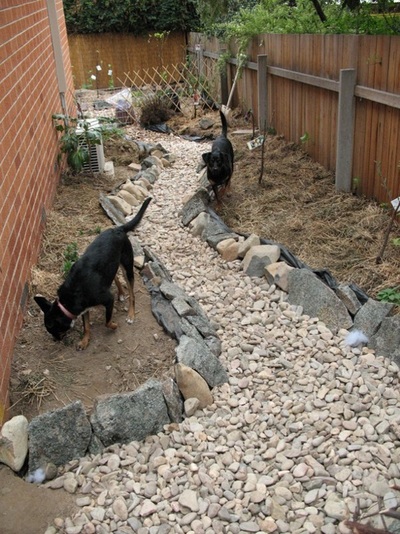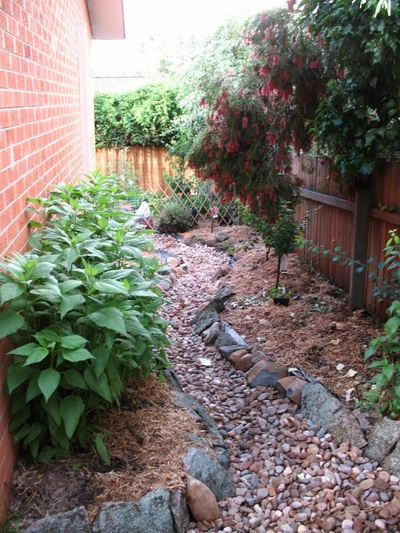What is permaculture anyway?
Three things every Canberra gardener should know about:
Wicking beds, French drains and 'Hugelkultur'
Wicking beds
Wicking beds are a great way to grow vegetables in any area where rainfall is intermittent or where there is competition from larger plants (like big gum trees) that make it all but impossible to establish a vegetable garden in the ground.
A wicking bed looks similar to any other raised garden bed - the difference is that it includes a waterproof liner, to make a reservoir under the soil. The water in the reservoir slowly 'wicks' up through the soil, keeping plants moist for much longer than in a regular raised bed. In fact, even in the height of summer, you might only need to water once or twice a fortnight. In winter, they often don't need watering at all. There's also an overflow pipe to make sure the bed never gets too wet when it rains a lot. Because the soil in the bed isn't actually in contact with the surrounding soil, you can grow water loving hungry vegetables in places you wouldn't normally be able to - saving space, and integrating yields into established ornamental gardens. I put a bed right next to a gum tree - the soil in the ground was dry and nothing much would grow in it, but the bed we established on top of the ground yielded plenty!
Wicking beds work on the same principle as 'self watering pots', the difference is that wicking beds can be any shape and size you want, especially if you make your own, and they have a larger, more effective reservoir inside. Mosquitoes can also be kept to a minimum as you can ensure there's no access for insects, unlike regular self watering pots.
Wicking beds vs wicking pots. You can make wicking pots (smaller scale) as well as beds (larger scale). Instead of buying a pricey self watering pot, you can make your own wicking pots from existing plant pots, buckets, or recycled polystyrene vegetable boxes. The pictures below show the general principles of wicking bed construction with an example I made in our garden:
A wicking bed looks similar to any other raised garden bed - the difference is that it includes a waterproof liner, to make a reservoir under the soil. The water in the reservoir slowly 'wicks' up through the soil, keeping plants moist for much longer than in a regular raised bed. In fact, even in the height of summer, you might only need to water once or twice a fortnight. In winter, they often don't need watering at all. There's also an overflow pipe to make sure the bed never gets too wet when it rains a lot. Because the soil in the bed isn't actually in contact with the surrounding soil, you can grow water loving hungry vegetables in places you wouldn't normally be able to - saving space, and integrating yields into established ornamental gardens. I put a bed right next to a gum tree - the soil in the ground was dry and nothing much would grow in it, but the bed we established on top of the ground yielded plenty!
Wicking beds work on the same principle as 'self watering pots', the difference is that wicking beds can be any shape and size you want, especially if you make your own, and they have a larger, more effective reservoir inside. Mosquitoes can also be kept to a minimum as you can ensure there's no access for insects, unlike regular self watering pots.
Wicking beds vs wicking pots. You can make wicking pots (smaller scale) as well as beds (larger scale). Instead of buying a pricey self watering pot, you can make your own wicking pots from existing plant pots, buckets, or recycled polystyrene vegetable boxes. The pictures below show the general principles of wicking bed construction with an example I made in our garden:
If you would like to know more about wicking beds and pots, check out the blog pages for updates on our wicking beds and progress. The web has a lot of information about them too. For a free printable reference guide to wicking beds, click here.
French Drains
French drains are really just a fancy way to refer to gravel or rock filled trenches. A really handy way to capture rain water runoff, even in small gardens. The soil has an amazing capacity to store water, it can be a lot more convenient and space effective to do this than buying a tank. But before you think adding French drains to a garden might make it look like a building site, they make particularly attractive garden paths. Permaculture encourages us to use each element in a garden or landscape as many ways as possible - it's much more efficient and makes a garden more resilient too. French drains double as garden paths or can be decoratively integrated with paved areas. The photos below show what I mean - click on each photo for a description of what is happening.
Hugelkultur
Hugelkultur (a German word meaning mixed cultivation), is really nothing more than making a mound in your garden by covering woody tree waste and prunings with a layer of manure and soil. It's meant to replicate what happens when an old tree falls in a forest and slowly rots, returning all of the nutrients held in the tree back to the soil. Permaculture avoids waste by recycling nutrients wherever possible. Prunings from large woody shrubs and trees (or even whole trees that have been cut down) can be laid on the garden, watered well and covered with a thick layer of manure (to hasten decomposition) and soil. The wood in the trees holds a lot of moisture, so hugelkultur beds can stay moist for a while, and you can even plant straight into them, if you put enough soil on top. Over time the wood rots and supplies nutrients to the roots of the plants.
Because the beds are a little bit raised, by placing them in the right places on your slope, you can also use them to slow down any water run off and get more water into the soil. Over time this will help the bed rot down and your plants to be healthier and happier too.
Hugelkultur can be practised in most gardens, except where space is extremely limited. So, the next time you're about to cart your prunings off to the tip, maybe you could make a hugelkultur bed instead?

